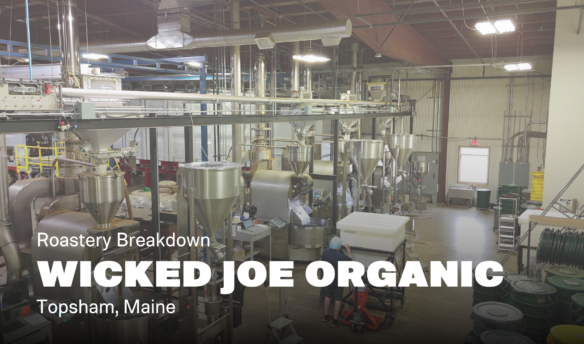[C]offee’s complex flavor is the result of hundreds of chemical compounds found in the roasted bean—some 1,800 and counting. These compounds fall into several major categories, each presenting its own challenge in the effort to maintain freshness. But four factors strongly influence the behavior of many compounds: temperature, humidity, oxygen, and time.
For roasted beans, these four factors take on the mathematical meaning of the word—their effects multiply each other. If you can’t control all, control the ones you can to minimize the others’ effects.
Temperature: Room temperature provides heat that accelerates staling. Refrigerators are harmful due to humidity, emulsification of oils, and undesirable odors. If you cannot consistently maintain a cool, dry location and minimal time from roaster to cup, freezing in a truly airtight container may be your best option to minimize chemical action in roasted beans.
Humidity: The steamy environment of roaster-retailer settings is not ideal for roasted beans, which need a low ambient humidity. Also, the bins in which roasted beans are stored can trap humidity from the beans themselves, accelerating staleness. (The water in the air contributes to several of the chemical processes involved in staling.) The optimal environment to retard staling and loss of flavor is sealed storage with very low, controlled humidity.
Oxygen: Even a tight, sealed bag, or one that’s vacuum-packed, contains enough oxygen to complete the chemical process of oxidizing all the beans. Better is a sealed container that has been not just evacuated but has also had the air displaced with non-oxygen gas. Once bags are sealed, air continues circulating and entering the bean through normal gas exchange.
Time*: Even one week under normal storage conditions at the roastery (or in transit, a retailer, or in a home) can diminish flavor compounds. Roaster and retailer logistics mitigate staling, especially for beverages served in the café; but home preparation still relies on the customer to buy fresh and use promptly.
Optimally, roasted beans should be stored in an oxygen-free container with very low humidity, and kept rather cool. The worst thing you can do to the beans’ longevity is to grind them; most of the aromatics are released or brought to the surface, and the coffee loses flavor perceptibly in a matter of minutes, losing most of it in a single day.
*It’s also important to note that brewing coffee that is not aged can result in extraction issues. This is especially true for espresso, with many coffees peaking in espresso quality 10 to 14 days after roasting.
—James di Properzio is a freelance writer based in Medford, Oregon.















